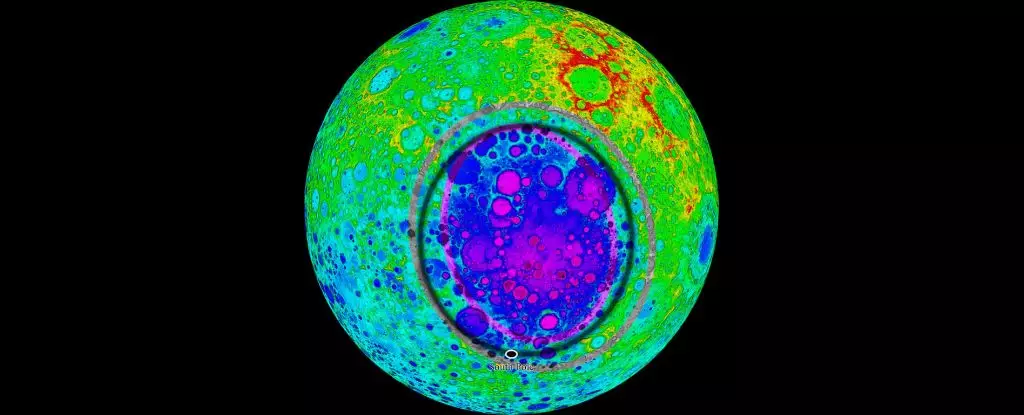The Moon stands as a testament to the dynamic and violent history of our Solar System, marked by its surface which bears countless scars from impacts over billions of years. Among these, the South Pole-Aitken (SPA) basin emerges as a defining feature, representing not just a significant geological landmark on the Moon but one of the largest craters known within the entire Solar System. With a staggering diameter of approximately 2,500 kilometers (1,550 miles), it encompasses nearly a quarter of the lunar surface. However, studying this colossal formation poses considerable challenges, given its vast age and the continual impact events that have obscured its true characteristics. Recent research is beginning to unveil new details about this crater’s formation and layout, potentially reshaping our understanding of lunar history and informing future missions aimed at its exploration.
Dating back over 4 billion years, the South Pole-Aitken basin presents a puzzle for scientists. Historically, it was thought to have formed from an oblique collision with a large celestial body, resulting in an oval-like crater. This perspective held that such a trajectory would cause debris from the impact to be scattered predominantly in one direction, away from the basin’s south pole. However, emerging studies indicate that the real scenario may be quite different. Research led by geologist Hannes Bernhardt from the University of Maryland challenges established theories about the impact mechanics of this massive crater, revealing signs that it might have originated from a more vertical collision process instead.
Such conclusions stem from meticulous investigations of geological features along the basin’s perimeter. Using data from NASA’s Lunar Reconnaissance Orbiter, which has been mapping the lunar surface since 2009, scientists cataloged over 200 mountain-like formations that potentially represent remnants of the initial rim of the crater. Surprisingly, instead of the expected oval configuration, these features revealed a surprisingly circular shape. This finding aligns with the hypothesis that a more vertical impact could have taken place, much like a rock dropping straight down onto a surface.
This research carries profound implications for future lunar exploration endeavors. The circularity observed suggests that the material ejected from the impact is distributed more evenly around the basin than previously assumed. For astronauts or robotic missions targeting the lunar south pole, this means there could be increased chances of accessing materials from the Moon’s mantle or deeper crust, offering unprecedented opportunities to study geological samples that are both ancient and inaccessible elsewhere on the Moon’s surface.
Understanding the nature and composition of the Moon’s materials has far-reaching consequences for our knowledge of lunar formation and evolution. The leading hypothesis suggests that the Moon formed from debris created by a colossal impact event with Earth during the early days of the Solar System. Other theories propose that the Moon could have formed from coalescing materials in a cloud of debris or even been captured gravitationally by Earth. Uncovering well-preserved samples from the SPA basin could hold the keys to resolving these longstanding debates by offering insights into the Moon’s formative years.
Interestingly, recent measurements have indicated that the gravity around the SPA basin shows unusual characteristics, suggesting the presence of a denser material beneath the lunar crust. One possibility is that a massive, dense fragment of an asteroid lies buried under this colossal crater. This may correlate with the new findings regarding the vertical impact angle, which could help explain the anomalies observed in the gravity readings.
Moreover, access to ancient lunar materials unlocks a treasure trove of geological information. These samples could provide context to the evolution of not just the Moon but also the Earth-Moon system, shedding light on processes that occurred in the early Solar System. The potential for significant discoveries is immense, and as Bernhardt notes, the implications of this new understanding extend well beyond our lunar neighbor, possibly influencing future exploration missions beyond the Moon itself.
As scientists continue to unravel the complex narrative of the South Pole-Aitken basin, the findings exemplify how ripe the Moon remains for exploration and discovery. By challenging preconceived notions of its formation through fresh perspectives and advanced technology, researchers are laying the groundwork for future lunar explorations that could yield transformative insights about our cosmic history. The Moon is not merely a silent witness to the past; it is a vital source of knowledge awaiting discovery.

